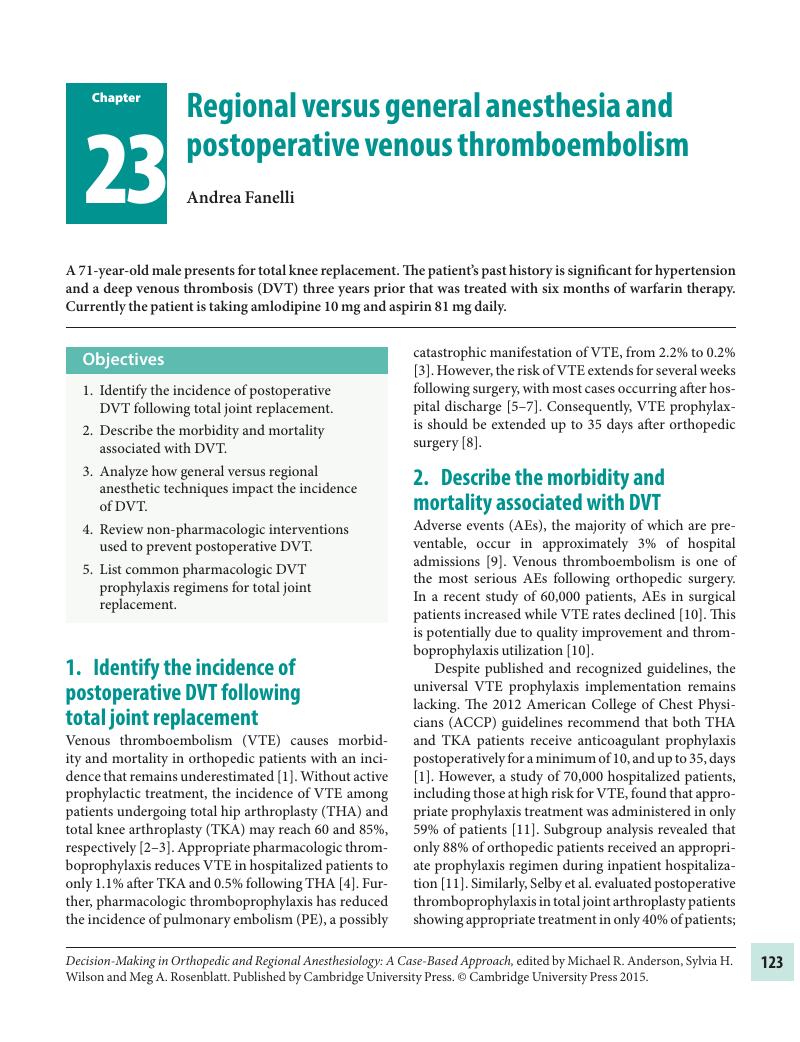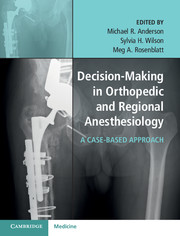Book contents
- Decision-Making in Orthopedic and Regional AnesthesiologyA Case-Based Approach
- Decision-Making in Orthopedic and Regional Anesthesiology
- Copyright page
- Contents
- List of contributors
- Preface
- Section 1 General considerations in regional anesthesia
- Section 2 Special patient considerations
- Section 3 Total joint replacements
- Chapter 18 Total hip arthroplasty
- Chapter 19 Total knee arthroplasty
- Chapter 20 Total shoulder replacement
- Chapter 21 Total elbow replacement
- Chapter 22 Bone cement implantation syndrome
- Chapter 23 Regional versus general anesthesia and postoperative venous thromboembolism
- Section 4 Orthopedic trauma
- Section 5 Sports medicine and hand surgery
- Index
- References
Chapter 23 - Regional versus general anesthesia and postoperative venous thromboembolism
from Section 3 - Total joint replacements
Published online by Cambridge University Press: 05 October 2015
- Decision-Making in Orthopedic and Regional AnesthesiologyA Case-Based Approach
- Decision-Making in Orthopedic and Regional Anesthesiology
- Copyright page
- Contents
- List of contributors
- Preface
- Section 1 General considerations in regional anesthesia
- Section 2 Special patient considerations
- Section 3 Total joint replacements
- Chapter 18 Total hip arthroplasty
- Chapter 19 Total knee arthroplasty
- Chapter 20 Total shoulder replacement
- Chapter 21 Total elbow replacement
- Chapter 22 Bone cement implantation syndrome
- Chapter 23 Regional versus general anesthesia and postoperative venous thromboembolism
- Section 4 Orthopedic trauma
- Section 5 Sports medicine and hand surgery
- Index
- References
Summary

- Type
- Chapter
- Information
- Decision-Making in Orthopedic and Regional AnesthesiologyA Case-Based Approach, pp. 123 - 127Publisher: Cambridge University PressPrint publication year: 2015



